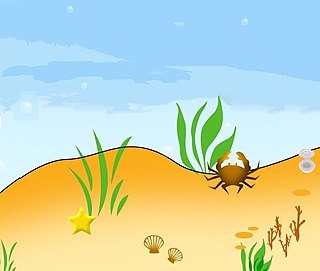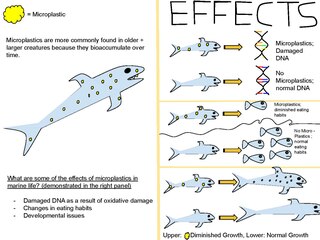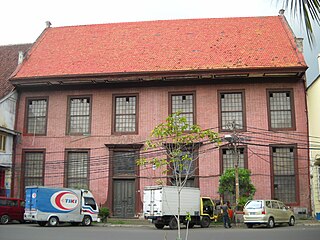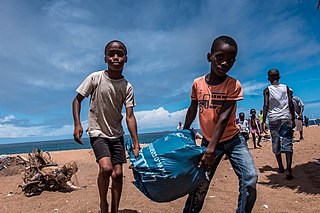
Marine debris, also known as marine litter, is human-created waste that has deliberately or accidentally been released in a sea or ocean. Floating oceanic debris tends to accumulate at the center of gyres and on coastlines, frequently washing aground, when it is known as beach litter or tidewrack. Deliberate disposal of wastes at sea is called ocean dumping. Naturally occurring debris, such as driftwood and drift seeds, are also present. With the increasing use of plastic, human influence has become an issue as many types of (petrochemical) plastics do not biodegrade quickly, as would natural or organic materials. The largest single type of plastic pollution (~10%) and majority of large plastic in the oceans is discarded and lost nets from the fishing industry. Waterborne plastic poses a serious threat to fish, seabirds, marine reptiles, and marine mammals, as well as to boats and coasts.

Blast fishing, fish bombing, dynamite fishing or grenade fishing is a destructive fishing practice using explosives to stun or kill schools of fish for easy collection. This often illegal practice is extremely destructive to the surrounding ecosystem, as the explosion often destroys the underlying habitat that supports the fish. The frequently improvised nature of the explosives used, and undetonated charges, means danger for fishermen and divers as well, with accidents and injuries.

The Ciliwung is a 119km long river in the northwestern region of Java where it flows through two provinces, West Java and the special region of Jakarta. The natural estuary of the Ciliwung river, known as the Kali Besar, was an important strategic point for trade in the precolonial and colonial periods and was instrumental in the founding of the port city of Jakarta, but has been lost from reorganization of the watercourse of the rivers around the area into canals.

Kota Tua Jakarta, officially known as Kota Tua, is a neighborhood comprising the original downtown area of Jakarta, Indonesia. It is also known as Oud Batavia, Benedenstad, or Kota Lama.

Poerbatjaraka was a Javanese/Indonesian self-taught philologist and professor, specialising in Javanese literature. The eldest son of a Surakarta royal courtier in the Dutch East Indies, he showed interest in Javanese literature at an early age, reading from books in the court's collection. Despite attending only primary school, his knowledge of Dutch and Javanese literature allowed him to take a position at the colony's Archaeology Service, and then at Leiden University in the Netherlands. He was allowed to obtain a doctor's degree at Leiden. He then returned to the colony to work at a Batavia museum, cataloguing Javanese texts and writing scholarly works. After Indonesia's independence, he became a professor at the universities of Indonesia, Gajah Mada, and Udayana.

Plastic pellet pollution is a type of marine debris originating from the plastic particles that are universally used to manufacture large-scale plastics. In the context of plastic pollution, these pre-production plastic pellets are commonly known as 'nurdles'. These microplastics are created separately from the user plastics they are melted down to form, and pellet loss can occur during both the manufacturing and transport stages. When released into the open environment, they create persistent pollution both in the oceans and on beaches. About 230,000 tonnes of nurdles are thought to be deposited in the oceans each year, where they are often mistaken for food by seabirds, fish and other wildlife. Due to their small size, they are notoriously difficult to clear up from beaches and elsewhere.

Macrobenthos consists of the organisms that live at the bottom of a water column and are visible to the naked eye. In some classification schemes, these organisms are larger than 1 mm; in another, the smallest dimension must be at least 0.5 mm. They include polychaete worms, pelecypods, anthozoans, echinoderms, sponges, ascidians, crustaceans.

Marine plastic pollution is a type of marine pollution by plastics, ranging in size from large original material such as bottles and bags, down to microplastics formed from the fragmentation of plastic material. Marine debris is mainly discarded human rubbish which floats on, or is suspended in the ocean. Eighty percent of marine debris is plastic. Microplastics and nanoplastics result from the breakdown or photodegradation of plastic waste in surface waters, rivers or oceans. Recently, scientists have uncovered nanoplastics in heavy snow, more specifically about 3,000 tons that cover Switzerland yearly.

Ancol is a coastal lowland area located to the east of Kota Tua Jakarta in northern Jakarta, in Indonesia. The coastal lowland stretched from Kota Tua Jakarta to the west and Tanjung Priok to the east. Today, Ancol contains the main beach resort of Jakarta. Taman Impian Jaya Ancol, the largest integrated tourism area in South East Asia, is located in Ancol.

The Ci Durian, or Ci Kandi, is a river in the Banten province of western Java, Indonesia. It rises in the mountains to the south and flows north to the Java Sea. The delta of the river, now canalized, has long been used for rice paddies and for a period was also used for sugarcane plantations. Extensive irrigation works diverted water from the river into a canal system in the 1920s, but these works were not completed and suffered from neglect in the post-colonial era. Plans were made in the 1990s to rehabilitate the irrigation works and dam the river to provide water for industrial projects, with Dutch and Japanese assistance, but these were cancelled by the Indonesian government.

Benteng people are a Chinese Indonesian community of 'Peranakan' or mixed descent, native to the historic Tangerang area in the modern-day Indonesian provinces of Jakarta, Banten and West Java.

Toko Merah is a Dutch colonial landmark in Jakarta Old Town, Indonesia. Built in 1730, it is one of the oldest buildings in Jakarta. The building is located on the west side of the main canal Kali Besar. The building's red color contributes to its current name.

Padang Station (PD) is a railway station of the Pulau Aie–Padang Panjang railway and Teluk Bayur–Padang railway located at Jl. Stasiun No. 1, Simpang Haru, Eastern Padang, Padang, West Sumatra.

The Thousand Islands are a chain of islands to the north of Jakarta's coast. It forms the only regency of Jakarta, the capital of Indonesia. It consists of a string of 342 islands stretching 45 km (28 mi) north into the Java Sea at West Jakarta Bay and in fact north of Banten Province. Pramuka Island is the regency seat. The islands, along with North Jakarta, is the only two regions in Jakarta with a coastline.

The Angke River is a 91.25-kilometre (56.70 mi) long river in Jakarta, Indonesia. The river flows from the Bogor area of West Java, passing through the cities of Tangerang (Banten) and Jakarta into the Java Sea via the Cengkareng Drain. The river is connected with the Cisadane River by Mookervaart Canal.

Baru Timur River is a man-made canal flowing from Ci Liwung in Bogor Regency to Jakarta, Indonesia. It was one of two canals built in the 18th century under the order of the Governor-General Gustaaf Willem van Imhoff originally to transport agriculture harvest from Bogor to Batavia. Currently both canals, now known as Kali Baru Timur and Kali Baru Barat, are among the main rivers in Jakarta, and part of the Ciliwung Cisadane flood control project. Baru Timur River flows from Katulampa flood gate, built at the same time as the canal, along the major road Bogor Highway, passing Cimanggis, Depok, Cilangkap, until reaching Java Sea in Kali Besar, Tanjung Priok, North Jakarta.

Beach cleaning or clean-up is the process of removing solid litter, dense chemicals, and organic debris deposited on a beach or coastline by the tide, local visitors, or tourists. Humans pollute beaches with materials such as plastic bottles and bags, plastic straws, fishing gear, cigarette filters, six-pack rings, surgical masks and many other items that often lead to environmental degradation. Every year hundreds of thousands of volunteers comb beaches and coastlines around the world to clean this debris. These materials are also called “marine debris” or "marine pollution" and their quantity has been increasing due to anthropocentric activities.

Deception Bay is a bay within Moreton Bay in the City of Moreton Bay, Queensland, Australia. The bay is shallow. It contains some seagrass beds.

The Mediterranean Sea has been defined as one of the seas most affected by marine plastic pollution.



















